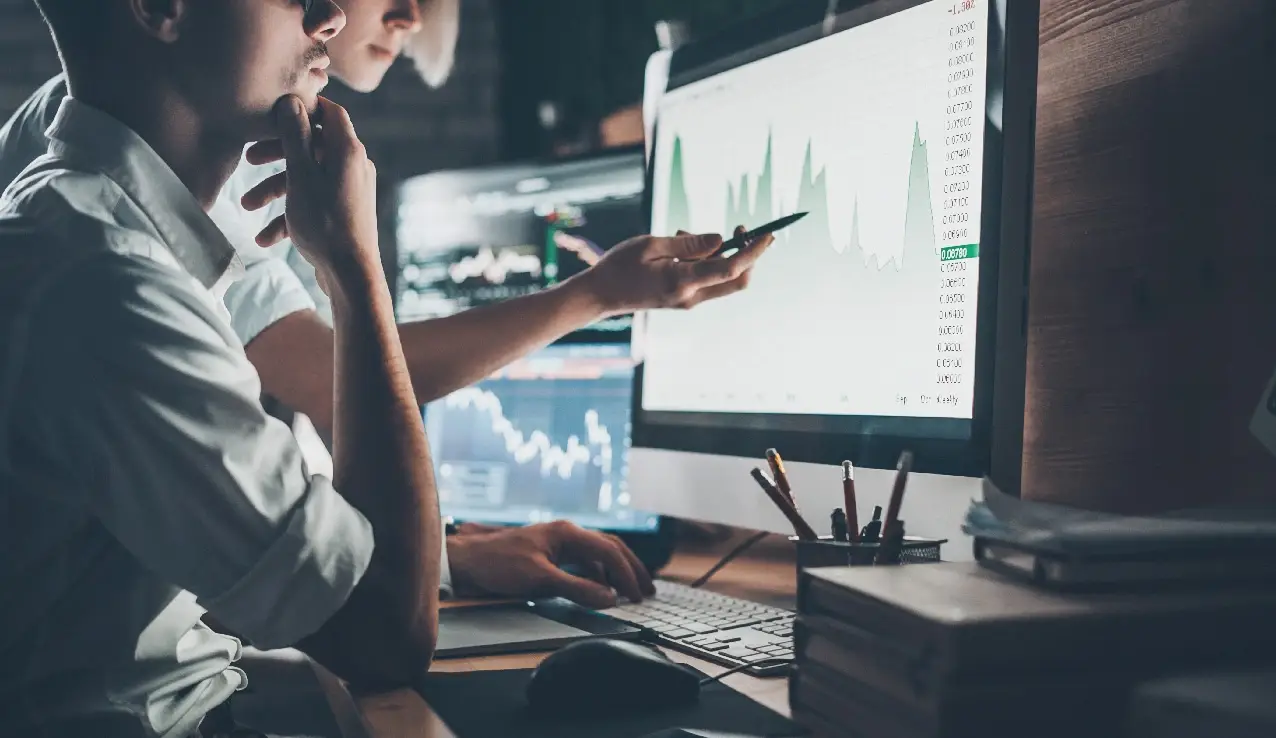Trading is not just about asset transactions, but about capital management in dynamic market conditions. Millions of traders analyze charts, evaluate news, and make decisions based on probabilities every day.
Trading on major exchanges amounts to trillions of dollars, and high competition requires discipline, analytics, and a clear strategy. Without risk management, even promising deals result in losses.

For some, trading is an additional income, for others, it’s a profession. Success depends on understanding the market, controlling emotions, and adapting to changes. Let’s delve into all the nuances in the article.
What is trading
The financial market attracts millions of participants annually, promising high income and independence. What is trading really? Many envision it as an easy path to wealth, but reality proves to be more complex. It is based on the process of buying and selling assets to make a profit. Key trading platforms include stock exchanges, currency markets, and cryptocurrency exchanges. The daily trading volume on the Forex market alone exceeds $6.6 trillion (according to BIS data). This demonstrates the scale of the industry.
The main misconception is that trading can be mastered in a couple of weeks. Novices face psychological barriers, technical complexities, and financial risks. Errors in analysis, incorrect strategies lead to losses. A comprehensive approach based on education, strategy, and discipline allows for achieving stable profits.
Who is a trader: a profession not accessible to everyone
A trader is a person who makes financial decisions based on market analysis. There are several main categories:
- Investors – work on a long-term basis, investing money in promising assets;
- Speculators – focus on short-term deals. They profit from sharp price fluctuations;
- Scalpers – make dozens or hundreds of trades per day, capturing minimal profit with each one;
- Algorithmic traders – use automated trading systems for analysis and trade execution.
Each of these styles requires a specific set of skills, patience, and understanding of market mechanics. Over 90% of beginners lose money in the first few months. The main reasons are poor preparation, lack of trading strategy, and ignoring risk management.
How to become a successful trader
Earning through trading is possible, but the process requires preparation. How to become a successful trader and not lose capital in the first few weeks?
Let’s consider the important success stages:
- Education. Understanding fundamental and technical analysis, principles of capital management, and market psychology are the keys to victory. Free courses, professional literature, video lessons help lay a solid foundation.
- Choosing a reliable broker. Regulated companies provide clients with quality trading conditions, low spreads, fund protection. Before opening an account, it is important to study commission fees, available assets, order execution speed.
- Testing strategies on a demo account. This tool allows you to try out different approaches without risk, hone analysis skills. After several months of confident trading, you can move on to a real account.
Key trader skills
To achieve success, it is necessary to fully understand what trading is and develop key competencies.
Trader skills include:
- Market analysis – studying charts, identifying entry points, understanding signals, indicators, and trading volumes. It is important to be able to interpret candlestick patterns, trends, and support and resistance levels. Sound technical analysis helps make informed decisions.
- Understanding the financial market – knowledge of macroeconomics basics, the impact of news, political events, and economic indicators on assets. Developing fundamental analysis skills allows for evaluating the growth potential or decline of instruments.
- Emotional control – the ability to make decisions without panic, stress management, absence of impulsive actions. A successful trader must avoid psychological traps such as fear of missing out (FOMO) and overconfidence.
- Strategic thinking – the ability to adapt to changes in market conditions, analyze mistakes, and adjust approaches. Flexibility and the ability to change strategy depending on volatility and market cycles. This increases the chances of long-term profitability.
- Risk management – clear definition of stop-loss levels, control of position sizes, calculation of potential risk-reward ratios. The standard rule for professionals is not to risk more than 2% of capital in one trade.
- Understanding crowd psychology – analyzing the behavior of other market participants, identifying mass trends and herd instinct in trading. Price movement is linked to traders’ emotional reactions, providing the opportunity to anticipate corrections and trend reversals.
Without these qualities, trading turns into a casino where profit depends on luck, and losses are inevitable. Continuous development, analysis, and adaptation to market conditions are the foundation of successful trading.
How much does a trader earn
The most popular question is how much a specialist earns. The answer depends on numerous factors: starting capital, experience, and chosen strategy. The average private trader in the stock market earns from 5% to 20% annually. Professionals in large hedge funds can earn 50-100% per year.
In the Forex and cryptocurrency markets, profitability varies. High volatility opens up opportunities for quick profits and increases risk. Over 90% of traders lose deposits because they ignore capital management.

What is trading and is it worth delving into?
Before entering the market, it is important to understand the risks. Trading is a discipline that requires knowledge, experience, and patience. Without a clear system, stable earnings are impossible.
It is worth starting with demo accounts, market analysis, and strategy testing. But it should only be done if you are ready to approach the process consciously. Only this will lead to a good result.
 en
en  ru
ru  de
de  ar
ar  es
es  hi
hi  fr
fr  nl
nl  it
it  pt
pt  el
el 










